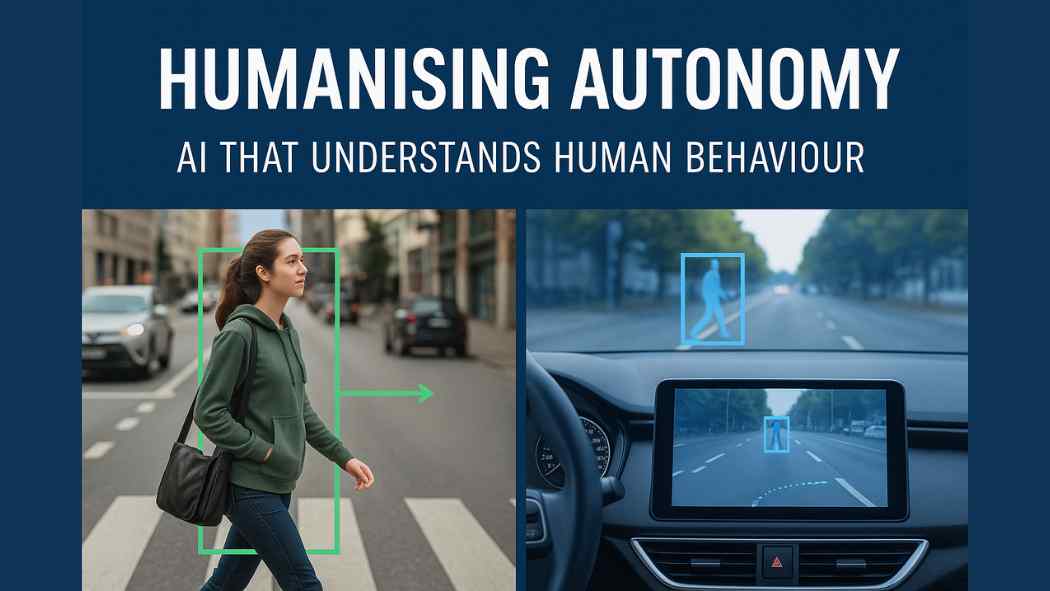Humanising Autonomy: Redefining the Relationship Between Humans and Machines

Technology has always been about convenience, efficiency, and progress. However, as artificial intelligence and automation have become more integrated into our daily lives, a new challenge has emerged — ensuring that machines understand people, not just processes. Humanising Autonomy stands at the forefront of this transformation, building a bridge between human behaviour and machine intelligence. This innovative UK-based company has reshaped how autonomous systems perceive, predict, and respond to human actions, marking a significant shift in the future of smart cities, mobility, and ethical artificial intelligence.
The Vision Behind Humanising Autonomy
Founded in 2017 by Maya Pindeus, Raunaq Bose, and Leslie Nooteboom, Humanising Autonomy was created with a simple yet ambitious vision: to make autonomous systems behave in ways that respect and understand people. The founders believed that for automation to thrive safely and effectively in public spaces, machines must first learn how humans think, move, and interact.
Their philosophy is rooted in empathy and understanding. Instead of designing algorithms that purely focus on mathematical precision, Humanising Autonomy focuses on context — teaching machines to interpret human intent, gestures, and social signals. This makes autonomous systems more relatable, safer, and adaptable to real-world environments.
The Technology: Where AI Meets Human Behaviour
At the heart of Humanising Autonomy’s innovation lies behavioural prediction technology. Their advanced artificial intelligence models analyse video data from cameras, vehicles, or infrastructure sensors to interpret what people are likely to do next.
For instance, when a pedestrian approaches a road junction, the AI can predict whether they intend to cross or wait, based on subtle cues such as posture, head movement, or hand gestures. These split-second interpretations can prevent accidents, improve traffic flow, and enhance the decision-making of self-driving vehicles.
The company combines computer vision, machine learning, and behavioural science to train its algorithms. These models process thousands of real-world scenarios — from crowded city crossings to quiet suburban streets — to learn the complex patterns of human movement. Unlike traditional AI that relies only on object detection, Humanising Autonomy’s system focuses on intent recognition, giving machines a deeper understanding of why people act the way they do.
Applications in the Real World
The impact of Humanising Autonomy extends across multiple industries.
1. Autonomous Vehicles and Advanced Driver Assistance Systems (ADAS)
In the automotive sector, their technology has become a critical component of next-generation driver assistance systems. It helps vehicles anticipate human behaviour, such as a cyclist swerving or a pedestrian stepping off the pavement. This real-time predictive ability enhances safety and gives drivers more time to react.
2. Smart Infrastructure and City Planning
Urban planners and local councils are using similar technology to study how pedestrians move through city spaces. By understanding behaviour patterns, cities can optimise traffic signals, pedestrian crossings, and public transport systems. The data gathered can also support the design of safer, more inclusive environments.
3. Fleet Management and Public Transport
Fleet operators and public transport companies benefit from predictive AI that monitors roads, identifies potential hazards, and supports drivers through intelligent alerts. This reduces collision risks and helps enforce safer driving standards across large vehicle networks.
4. Retail, Security, and Event Management
Humanising Autonomy’s behavioural models also have applications in crowd management and safety. For instance, understanding how people react in crowded environments or emergency situations allows authorities to respond quickly and efficiently, preventing panic and ensuring orderly evacuations.
Human-Centred AI and Ethical Design
What sets Humanising Autonomy apart from other AI companies is its human-first approach. Every product they create is guided by the principle that technology should serve humanity — not replace or control it.
Their systems are designed to work ethically, ensuring privacy and respect for individuals. Video data is anonymised, removing identifiable information before being processed. This commitment to data ethics has earned the company respect within the AI community and helped build trust with public sector partners.
In a world increasingly concerned about surveillance and privacy violations, Humanising Autonomy has set an example of how AI innovation can coexist with human rights and social responsibility.
The Importance of Cultural Context
Another crucial aspect of Humanising Autonomy’s work is recognising that human behaviour is not universal. A pedestrian in London might behave differently from one in Tokyo or Karachi. Cultural differences influence how people move, interact with vehicles, and interpret social cues.
To address this, the company trains its models using data from diverse environments around the world. This ensures that its predictions remain accurate across cultures and climates. For instance, jaywalking might be common in some regions, while strict road discipline is observed in others. Understanding these nuances allows the AI to adapt its decision-making process accordingly.
This cultural sensitivity not only improves safety but also makes the technology globally scalable. It is a vital step toward creating intelligent systems that respect the diversity of human behaviour.
Growth, Recognition, and Challenges
Humanising Autonomy quickly gained attention for its unique approach. It collaborated with organisations like Digital Catapult and AWS to enhance its computing capabilities and expand research. The startup attracted investors and won several innovation awards, highlighting its contribution to ethical AI and autonomous technology.
However, like many startups operating in a rapidly changing industry, the company also faced challenges. The path to commercialising cutting-edge AI can be long and expensive, especially when working with large automotive manufacturers and government partners. Despite significant progress, Humanising Autonomy encountered financial difficulties, leading to administrative restructuring in the UK.
Yet, its influence did not fade. In 2025, the company’s technology and intellectual property were acquired by Nextbase, a leading dash-cam manufacturer. The integration of Humanising Autonomy’s predictive AI into consumer dash-cams opened a new chapter for its technology. Millions of drivers could now benefit from advanced behavioural recognition systems that alert them to potential risks before accidents occur.
Lessons from Humanising Autonomy’s Journey
The story of Humanising Autonomy offers valuable lessons for the future of AI and human-machine relationships.
1. Understanding Over Automation
Automation without understanding can be dangerous. By prioritising human intent and emotion, the company proved that empathy and context are essential in technological progress.
2. Ethical Responsibility
In an age of data-driven innovation, ethical practices are vital. Humanising Autonomy showed that AI companies can respect privacy while still delivering powerful performance.
3. Adaptability and Real-World Testing
Human behaviour is unpredictable. The company’s success depended on continuous learning, adaptation, and testing across real-world environments rather than controlled simulations.
4. Collaboration Across Industries
Their partnerships with automotive firms, governments, and research bodies demonstrate the importance of interdisciplinary collaboration in shaping the future of AI.
The Future of Humanised Technology
The mission of Humanising Autonomy goes beyond cars and roads. It represents a broader movement toward humanised technology — systems that respond naturally to human needs and emotions.
In the future, similar AI could be integrated into drones, delivery robots, healthcare devices, and even smart homes. Imagine home assistants that understand emotional tone, security cameras that distinguish between normal and suspicious behaviour, or delivery bots that recognise when someone is distracted before approaching.
As artificial intelligence becomes more integrated into everyday life, the concept of humanising technology will become central to building trust between humans and machines.
The Broader Impact on Society
Humanising Autonomy’s work highlights the shift from mechanical automation to emotional intelligence in technology. When machines can predict, understand, and adapt to people, societies become safer and more efficient. Roads become less dangerous, cities more organised, and technology more relatable.
This human-machine harmony is particularly important in an era where many fear job losses or dehumanisation caused by automation. Instead of replacing humans, such AI complements them — making environments more supportive and intelligent.
Moreover, the research behind behaviour prediction contributes to urban planning, psychology, and data ethics. Policymakers can use these insights to design better transport systems and smarter cities while maintaining a balance between innovation and personal freedom.
Conclusion
Humanising Autonomy symbolises the future direction of artificial intelligence — one that values empathy as much as efficiency. By teaching machines to understand people, the company has redefined how humans interact with technology. Its vision of safer, more considerate automation continues to inspire new developments in AI, even after its acquisition.
The company’s journey reflects a deeper truth: progress is not only about creating smarter machines but also about making them more human-aware. As cities grow smarter and vehicles become autonomous, the principles established by Humanising Autonomy will remain vital — guiding developers, engineers, and policymakers towards a future where technology truly serves humanity.



